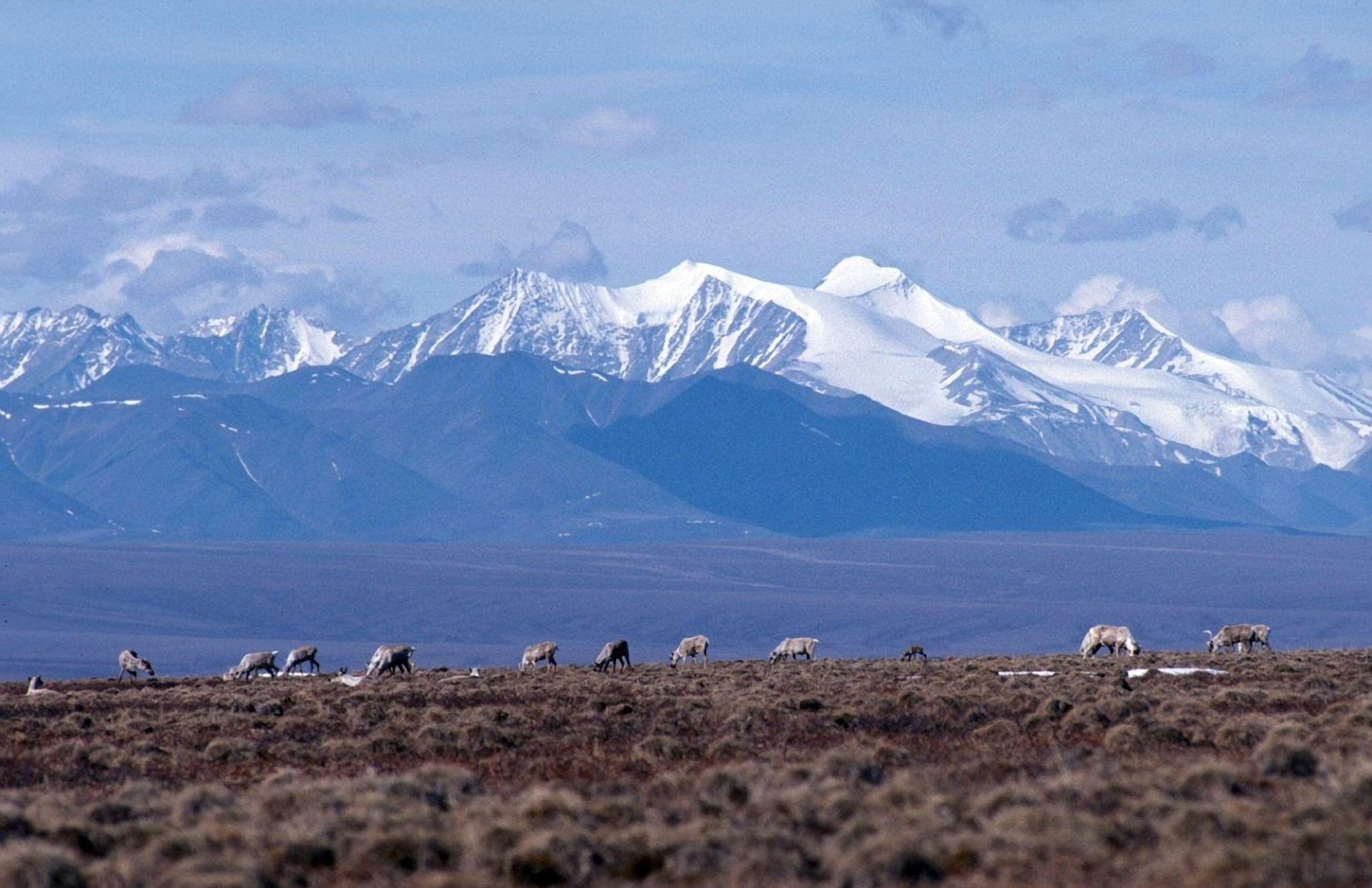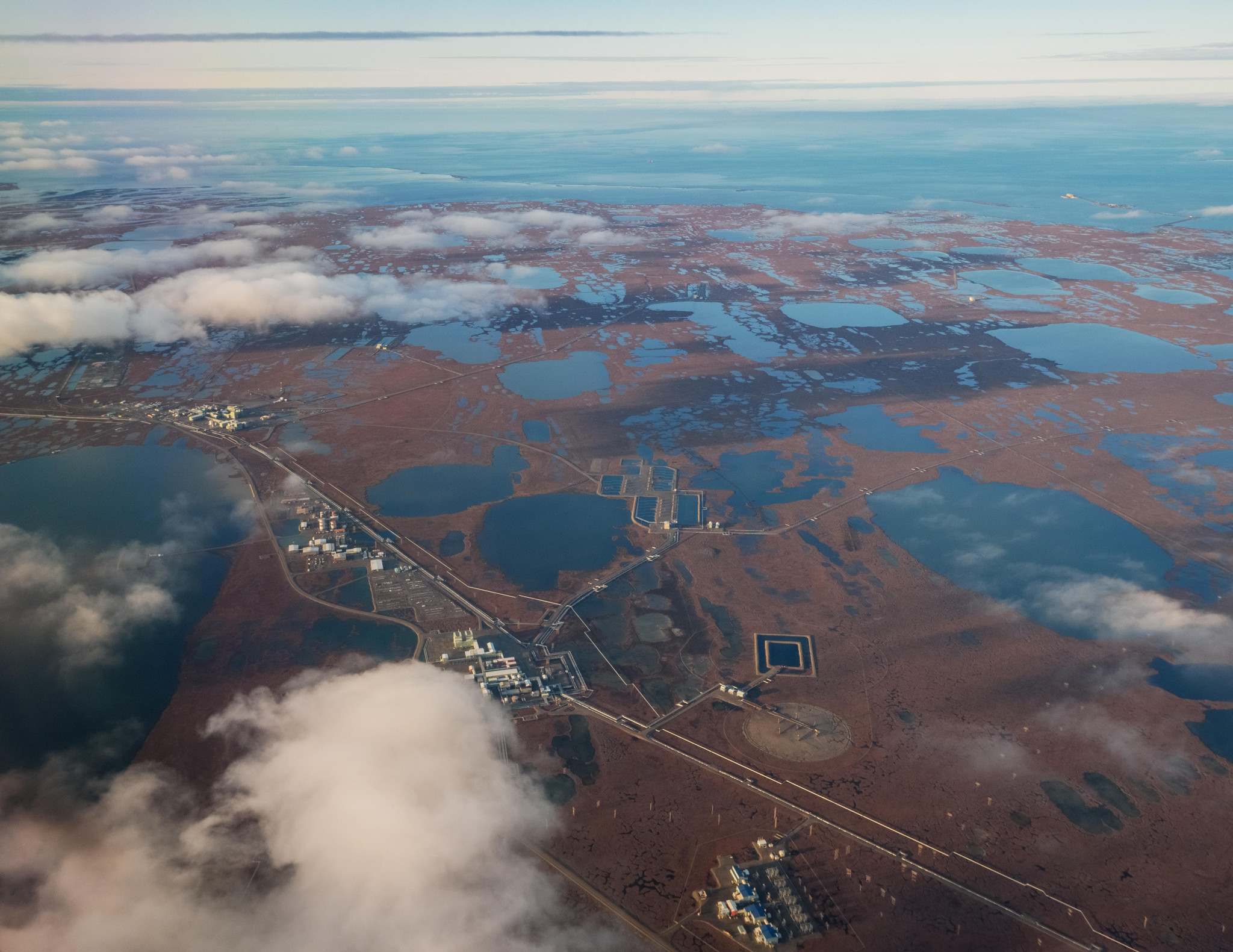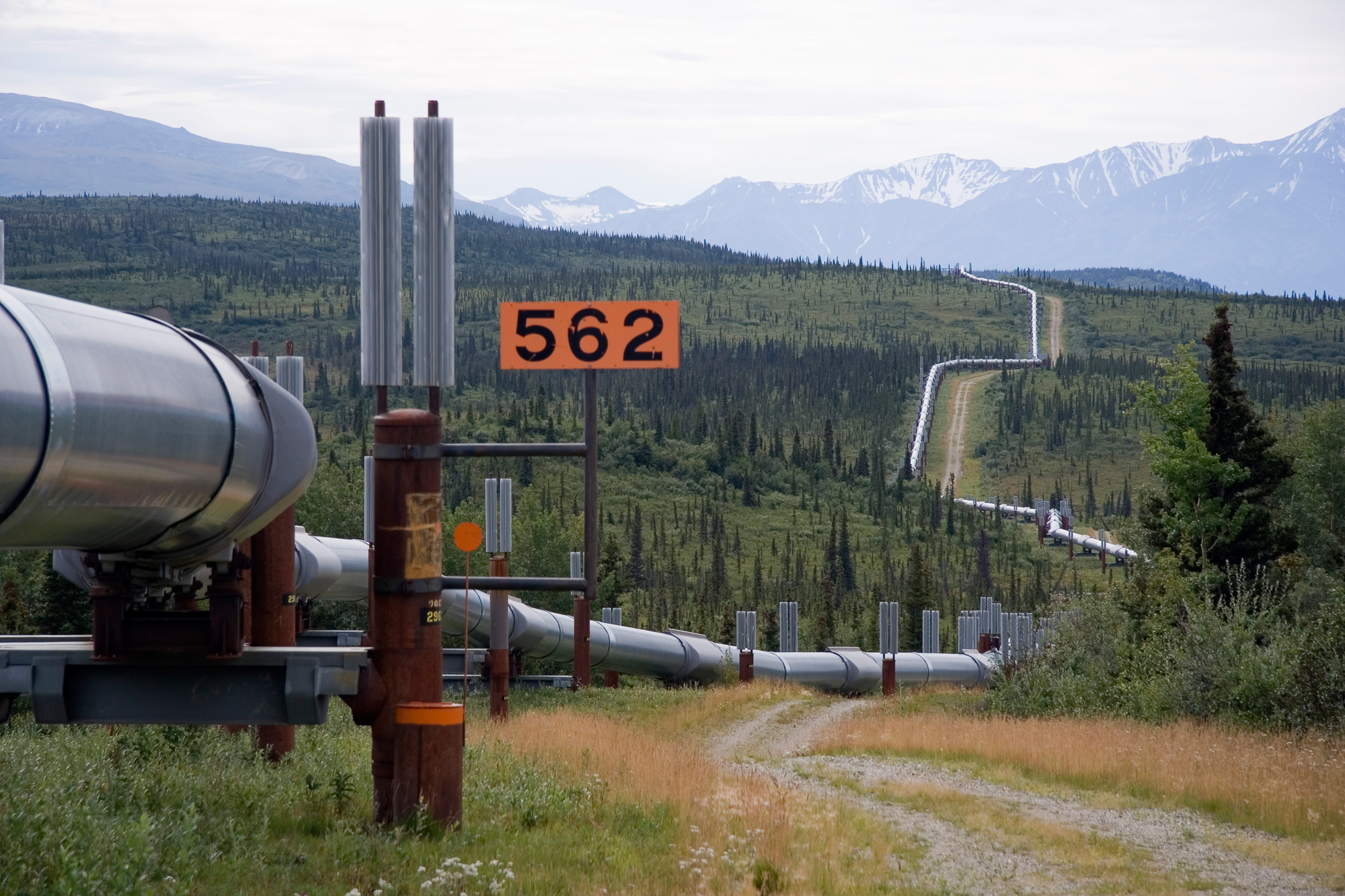Arctic National Wildlife Refuge
Location:
Alaska, United States
Project Risks:
Environmental Destruction, Social Harm, Litigation
approximate location
Keeping oil and gas companies away from the most sensitive areas of Alaska is a constant battle. Oil and gas companies have been forced to leave the plains and waters of the Arctic National Wildlife Refuge in Alaska alone. However, the State of Alaska is still determined to turn large parts of the Arctic landscape into an oil and gas extraction site.
The Arctic Refuge comprises 76,890 km2 (19,5 million acres) of mountains, rivers, forest and coastal tundra.[1] It stretches from the Arctic Ocean to Interior Alaska, and west to the border of Canada. There are no roads in the Refuge and very few people visit it. Indigenous Gwich’in and Iñupiat peoples live in remote villages in the Refuge. They rely on the Refuge’s resources, especially caribou (reindeer), to feed their people, make clothes and connect with the land on a spiritual level. The Gwich’in call the Refuge’s coastal plain, Iizhik Gwats’an Gwandaii Goodlit: “The Sacred Place Where Life Begins”.[2]
Many different animals are at home in the isolated Refuge. Musk oxen, moose, grizzly and black bears, polar bears, caribou, wolves, and arctic foxes live in large numbers in the plains and mountains. Snow geese, golden eagles, tundra swans, yellow wagtails, Arctic terns and more than 150 other bird species come here each summer.[3] Millions of birds depend on the Refuge’s coastal plain. The plain extends 1.5 million-acres between the Brooks Range and the Arctic Ocean. Every year, the birds nest here and raise their young.
The porcupine caribou herd numbers around 197,000 animals. Each summer, the animals travel thousands of kilometers from other areas of the Refuge and from neighboring Canada to the coastal plain. On the plain, caribou cows give birth and nurse their calves.[4]
Notes on Methodology: Reputational risk projects on GOGEL are updated annually. This article was last updated November 4 2025. None of the companies on the Global Oil & Gas Exit List are involved in the Arctic National Wildlife Refuge. In 2025, the US government proposed new oil and gas drillings in northern Alaska, making the danger for the vast and rare ecosystem alarmingly real. This text gives an overview of the potential consequences of oil and gas activities in the Refuge.

In recent years, the threat of oil and gas expansion has loomed over the Refuge. After a 40-year ban on oil and gas exploration in this wild landscape, the U.S. Senate passed the Tax Cuts and Jobs Act in 2017. This Act opened up for oil and gas lease sales on the coastal plain. The law disregarded public opposition to drilling in the Refuge, and ignored the human rights of Indigenous peoples.1459714599
In January 2021, the American government sold the first leases. There were only 3 bidders: Knik Arm Services, 88 Energy subsidiary Regenerate Alaska and the Alaska Industrial Development and Export Authority (AIDEA). However, the companies were not able to realize their plans for oil and gas extraction. In the summer of 2021, the Biden administration temporarily suspended all oil and gas leases in the Refuge. One year later, Knik Arm Services and Regenerate Alaska gave up and left. In September 2023, the government cancelled the remaining leases in the Refuge.15569
The State of Alaska and AIDEA refuse to let go of their fossil fantasies in the Refuge. AIDEA took legal action to overturn the decision.1556921421 In 2025, they won and shortly after announced they are going to conduct seismic surveying in the Refuge.23323 Seismic surveying involves sending loud soundwaves into the ground to explore for new oil and gas. These seismic studies would threaten denning polar bears and could crush their dens.23322 Polar bears are already threatened by climate change and melting ice sheets. They use the sea ice to move and hunt seals. When it disappears, their hunting territory shrinks and it becomes more difficult for them to find food. Oil projects in their territory is the last thing these animals need.21422
Currently, the Arctic is under massive attack. The new Trump administration immediately began putting the fragile Arctic ecosystem up for sale. In 2025, the government used the budget reconciliation bill to push for new oil and gas drilling projects. The bill requires four oil and gas lease sales to be held within the Refuge in the next 10 years. In each round, 400,000 acres of land (approximately the size of Los Angeles) are up for sale to oil and gas companies.23325 The five announced lease sales in the Western Arctic involves areas even ten times larger.23326 Here, ConocoPhillips is setting a dangerous precedent for oil expansion in the wilderness with its Willow development.

In the Arctic Refuge and other remote parts of Alaska, oil and gas development would break the animal habitat into disconnected pieces. This would be disastrous for pregnant and calving caribou. Oil and gas development would make it harder, if not impossible, for caribou, snow geese and nesting birds to live on the coastal plain or cross it. Oil and gas industry leaders claimed only 8.1 km² of the 6,070 km² coastal plain would be affected by oil production. However, this statement is misleading. In the Refuge, small oil deposits are scattered across the coastal plain.[9] If the oil companies started drilling, these deposits would need to be connected by roads and pipelines.[10] Large beds of gravel would be built for drilling rigs, pipelines would spread across tundra and cross rivers. All of this infrastructure would disrupt and destroy wildlife habitat and travel routes.
The risk of oil spills is high in the harsh Arctic environment. The oil and gas spree in Prudhoe Bay, right west of the Refuge, has resulted in thousands of oil spills in the middle of the Arctic wilderness. Since 1977, oil companies have sent more than 19 billion barrels of oil from Prudhoe Bay down the Trans-Alaska Oil Pipeline.15569 Spills have occurred frequently and caused permanent damage. The Alaska Department of Environmental Conservation reported that Prudhoe Bay oilfields and the Trans-Alaska Oil Pipeline caused, on average, 500 oil and toxic chemical spills per year between 1996 and 2004.[12] Today, the Trans Alaska Oil Pipeline and the oil companies operate on instable ground. The climate crisis is thawing the Arctic permafrost at a speed that makes oil spills from the pipeline more likely.15569
The more the regulatory measures protecting the oil and gas plans for the Arctic Refuge come under attack, the stronger the opposition rises. To protect the Arctic land, water, wildlife, and people, Indigenous groups and environmental organizations continue to launch lawsuits that challenge oil and gas leasing programs.146031460523327 Even the United Nations Committee on the Elimination of Racial Discrimination intervened. In a letter, it reminded the United States of its obligation to respect Indigenous peoples’ rights in the Arctic.14607 Public pressure became so strong that every major bank in the United States – Morgan Stanley, Wells Fargo, Goldman Sachs, JPMorgan Chase, Bank of America and Citigroup – publicly vowed to not finance new oil drilling in the Arctic Refuge.[15] Canada’s 5 largest banks and several other financial institutions did the same.[16]14609This is a glimmer of hope for the Arctic. It means that the banks have promised not to directly finance oil and gas projects in the Refuge. The animals, nature and people of Alaska’s Arctic have already paid a high price for society’s desire for oil. Those who only see dollar signs looking at the Arctic will find it less attractive to take part in upcoming lease sales when money and insurances for new oil and gas projects will be hard to find.23328

Groups working on ANWR: Gwich’in Steering Committee, Bad AIDEA, Arctic Refuge Defense Campaign, , Earthjustice